42017-89-0
| Name | fenofibric acid |
|---|---|
| Synonyms |
Procetofenic acid
2-(4'-(p-chlorobenzoyl)phenoxy)-2-methylpropionic acid 2-[4-(4-Chlorobenzoyl)phenoxy]-2-methyl-propanoic acid Fibricor Propanoic acid, 2-[4-(4-chlorobenzoyl)phenoxy]-2-methyl- Fenofibric acid Fenofibrate Related Compound B 2-[4-(4-Chlorobenzoyl)phenoxy]-2-methylpropanoic acid Fenofibrate impurity B EINECS 255-626-9 MFCD00792461 2-[4-(4-Chlorobenzoyl)phenoxy]-2-methylpropionic acid 2-(4-(4-chlorobenzoyl)phenoxy)-2-methylpropanoic acid |
| Description | Fenofibric acid, an active metabolite of fenofibrate, is a PPAR activitor, with EC50s of 22.4 µM, 1.47 µM, and 1.06 µM for PPARα, PPARγ and PPARδ, respectively; Fenofibric acid also inhibits COX-2 enzyme activity, with an IC50 of 48 nM. |
|---|---|
| Related Catalog | |
| Target |
PPARδ:1.06 μM (EC50) PPARγ:1.47 μM (EC50) PPARα:22.4 μM (EC50) COX-2:48 μM (IC50) |
| In Vitro | Fenofibric acid is a PPAR activitor, with EC50s of 22.4 µM, 1.47 µM, and 1.06 µM for PPARα, PPARγ and PPARδ, respectively[1]. Fenofibric acid (10, 25, 50, 75, and 100 nM) dose-dependently inhibits COX-2 enzyme, with IC50 of 48 nM[2]. Fenofibric acid (500 nM) reduces abundance of AOX1 protein in HepG2 cells[3]. Fenofibric acid (100 µM) decreases JNK1/2, c-Jun, and p38 MAPK phosphorylation, and prevents the accumulation of reactive oxygen species, endoplasmic reticulum (ER) stress and disruption of blood retinal barrier (BRB) in response to the combination of high-glucose (HG) and hypoxia in ARPE-19 cells. Fenofibric acid (100 µM) activates IGF-IR/Akt/ERK1/2-mediated survival signaling pathways in ARPE-19 cells under HG conditions and hypoxia[4]. |
| In Vivo | Fenofibric acid (1, 5, 10 mg/kg, p.o.) shows anti-inflammatory activity in Wistar rats with acute inflammation induced by carrageenan[2]. |
| Cell Assay | ARPE-19 cells are cultured under normoglycemic (5.5 mM D-glucose) or hyperglycemic (25 mM D-glucose) conditions for 18 days at 37°C under 5% (v/v) CO2 in medium DMEM/F12 supplemented with 10% (v/v) fetal serum (FS) and penicillin/streptomycin. ARPE-19 cells are used and the media is changed every 3-4 days. The conditions tested are: (1) Control cells which are maintained in 5.5 mM D-glucose (normal glucose) for 18 days. (2) Cells cultured in 5.5 mM D-glucose treated with 100 µM Fenofibric acid for 72 h (days 16, 17, and 18; 1 application/day). (3) Cells cultured as in (1) or (2) and submitted to hypoxia (1% oxygen) for the last 6 or 24 h. (4) Cells maintained in 25 mM D-glucose (HG) for 18 days. (5) Cells cultured in 25 mM D-glucose treated with 100 µM Fenofibric acid for 72 h (days 16, 17, and 18; 1 application/day). (6)Cells cultured as in (4) or (5) and submitted to hypoxia (1% oxygen) for the last 6 or 24 h[4]. |
| Animal Admin | The anti-inflammatory activity of fenofibrate and its active metabolite fenofibric acid is assessed by injecting 0.1 mL of 1% carrageenan solution prepared in saline (sub-plantar) to the right hind paw of the rats. Rats are divided into 6 groups of six animals each. The first group serves as negative control and receives 1% tween-80 in distilled water, 10 mL/kg body mass. Group 2 and 3 receive a single dose of fenofibrate and standard drug diclofenac at 10 mg/kg body mass, whereas groups 4, 5, and 6 receive 3 doses of Fenofibric acid at 1, 5, and 10 mg/kg body mass, respectively. All the drugs are given orally using gavages 60 min before the injection of 0.1 mL of 1% carrageenan through sub-plantar route. The volume of oedema of test and control groups is measured using plethysmometer at 0, 1, 2, and 3 h after induction of inflammation[2]. |
| References |
| Density | 1.3±0.1 g/cm3 |
|---|---|
| Boiling Point | 486.5±35.0 °C at 760 mmHg |
| Melting Point | 176--179ºC |
| Molecular Formula | C17H15ClO4 |
| Molecular Weight | 318.752 |
| Flash Point | 248.0±25.9 °C |
| Exact Mass | 318.065887 |
| PSA | 63.60000 |
| LogP | 3.86 |
| Vapour Pressure | 0.0±1.3 mmHg at 25°C |
| Index of Refraction | 1.585 |
| Storage condition | -20°C Freezer |
|
SECTION 1: Identification of the substance/mixture and of the company/undertaking Product identifiers Product name: Fenofibric acid REACH No.: A registration number is not available for this substance as the substance or its uses are exempted from registration, the annual tonnage does not require a registration or the registration is envisaged for a later registration deadline.
CAS-No.: 42017-89-0 Relevant identified uses of the substance or mixture and uses advised against Identified uses: Laboratory chemicals, Manufacture of substances SECTION 2: Hazards identification Classification of the substance or mixture Classification according to Regulation (EC) No 1272/2008 Acute toxicity, Oral (Category 4), H302 Acute aquatic toxicity (Category 1), H400 Chronic aquatic toxicity (Category 1), H410 For the full text of the H-Statements mentioned in this Section, see Section 16. Classification according to EU Directives 67/548/EEC or 1999/45/EC Xn, N Harmful, Dangerous for the R22, R50/53 environment For the full text of the R-phrases mentioned in this Section, see Section 16. Label elements Labelling according Regulation (EC) No 1272/2008 Pictogram Signal wordWarning Hazard statement(s) H302Harmful if swallowed. H410Very toxic to aquatic life with long lasting effects. Precautionary statement(s) P273Avoid release to the environment. P501Dispose of contents/ container to an approved waste disposal plant. Supplemental Hazardnone Statements Other hazards - none SECTION 3: Composition/information on ingredients Substances Formula: C17H15ClO4 Molecular Weight: 318,75 g/mol CAS-No.: 42017-89-0 EC-No.: 255-626-9 Hazardous ingredients according to Regulation (EC) No 1272/2008 ComponentClassificationConcentration 2-[4-(4-Chlorobenzoyl)phenoxy]-2-methylpropionic acid CAS-No.42017-89-0Acute Tox. 4; Aquatic Acute 1;<= 100 % EC-No.255-626-9Aquatic Chronic 1; H302, H410 Hazardous ingredients according to Directive 1999/45/EC ComponentClassificationConcentration 2-[4-(4-Chlorobenzoyl)phenoxy]-2-methylpropionic acid CAS-No.42017-89-0Xn, N, R22 - R50/53<= 100 % EC-No.255-626-9 For the full text of the H-Statements and R-Phrases mentioned in this Section, see Section 16 SECTION 4: First aid measures Description of first aid measures General advice Consult a physician. Show this safety data sheet to the doctor in attendance. If inhaled If breathed in, move person into fresh air. If not breathing, give artificial respiration. Consult a physician. In case of skin contact Wash off with soap and plenty of water. Consult a physician. In case of eye contact Flush eyes with water as a precaution. If swallowed Never give anything by mouth to an unconscious person. Rinse mouth with water. Consult a physician. Most important symptoms and effects, both acute and delayed The most important known symptoms and effects are described in the labelling (see section 2.2) and/or in section 11 Indication of any immediate medical attention and special treatment needed no data available SECTION 5: Firefighting measures Extinguishing media Suitable extinguishing media Use water spray, alcohol-resistant foam, dry chemical or carbon dioxide. Special hazards arising from the substance or mixture Carbon oxides, Hydrogen chloride gas Advice for firefighters Wear self contained breathing apparatus for fire fighting if necessary. Further information no data available SECTION 6: Accidental release measures Personal precautions, protective equipment and emergency procedures Use personal protective equipment. Avoid dust formation. Avoid breathing vapours, mist or gas. Ensure adequate ventilation. Avoid breathing dust. For personal protection see section 8. Environmental precautions Prevent further leakage or spillage if safe to do so. Do not let product enter drains. Discharge into the environment must be avoided. Methods and materials for containment and cleaning up Pick up and arrange disposal without creating dust. Sweep up and shovel. Keep in suitable, closed containers for disposal. Reference to other sections For disposal see section 13. SECTION 7: Handling and storage Precautions for safe handling Avoid contact with skin and eyes. Avoid formation of dust and aerosols. Provide appropriate exhaust ventilation at places where dust is formed. For precautions see section 2.2. Conditions for safe storage, including any incompatibilities Store in cool place. Keep container tightly closed in a dry and well-ventilated place. Specific end use(s) Apart from the uses mentioned in section 1.2 no other specific uses are stipulated SECTION 8: Exposure controls/personal protection Control parameters Components with workplace control parameters Exposure controls Appropriate engineering controls Handle in accordance with good industrial hygiene and safety practice. Wash hands before breaks and at the end of workday. Personal protective equipment Eye/face protection Safety glasses with side-shields conforming to EN166 Use equipment for eye protection tested and approved under appropriate government standards such as NIOSH (US) or EN 166(EU). Skin protection Handle with gloves. Gloves must be inspected prior to use. Use proper glove removal technique (without touching glove's outer surface) to avoid skin contact with this product. Dispose of contaminated gloves after use in accordance with applicable laws and good laboratory practices. Wash and dry hands. The selected protective gloves have to satisfy the specifications of EU Directive 89/686/EEC and the standard EN 374 derived from it. Body Protection Complete suit protecting against chemicals, The type of protective equipment must be selected according to the concentration and amount of the dangerous substance at the specific workplace. Respiratory protection For nuisance exposures use type P95 (US) or type P1 (EU EN 143) particle respirator.For higher level protection use type OV/AG/P99 (US) or type ABEK-P2 (EU EN 143) respirator cartridges. Use respirators and components tested and approved under appropriate government standards such as NIOSH (US) or CEN (EU). Control of environmental exposure Prevent further leakage or spillage if safe to do so. Do not let product enter drains. Discharge into the environment must be avoided. SECTION 9: Physical and chemical properties Information on basic physical and chemical properties a) AppearanceForm: powder Colour: white b) Odourno data available c) Odour Thresholdno data available d) pHno data available e) Melting point/freezingno data available point f) Initial boiling point and no data available boiling range g) Flash pointno data available h) Evapouration rateno data available i) Flammability (solid, gas) no data available j) Upper/lowerno data available flammability or explosive limits k) Vapour pressureno data available l) Vapour densityno data available m) Relative densityno data available n) Water solubilityno data available o) Partition coefficient: n- log Pow: 3,895 octanol/water p) Auto-ignitionno data available temperature q) Decompositionno data available temperature r) Viscosityno data available s) Explosive propertiesno data available t) Oxidizing propertiesno data available Other safety information no data available SECTION 10: Stability and reactivity Reactivity no data available Chemical stability Stable under recommended storage conditions. Possibility of hazardous reactions no data available Conditions to avoid no data available Incompatible materials Strong oxidizing agents Hazardous decomposition products Other decomposition products - no data available In the event of fire: see section 5 SECTION 11: Toxicological information Information on toxicological effects Acute toxicity LD50 Oral - rat - 1.242 mg/kg Skin corrosion/irritation no data available Serious eye damage/eye irritation no data available Respiratory or skin sensitisation Germ cell mutagenicity no data available Carcinogenicity IARC:No component of this product present at levels greater than or equal to 0.1% is identified as probable, possible or confirmed human carcinogen by IARC. Reproductive toxicity no data available Specific target organ toxicity - single exposure no data available Specific target organ toxicity - repeated exposure no data available Aspiration hazard no data available Additional Information RTECS: UA2453000 To the best of our knowledge, the chemical, physical, and toxicological properties have not been thoroughly investigated. SECTION 12: Ecological information Toxicity no data available Persistence and degradability no data available Bioaccumulative potential no data available Mobility in soil no data available Results of PBT and vPvB assessment PBT/vPvB assessment not available as chemical safety assessment not required/not conducted Other adverse effects Very toxic to aquatic life with long lasting effects. SECTION 13: Disposal considerations Waste treatment methods Product Offer surplus and non-recyclable solutions to a licensed disposal company. Dissolve or mix the material with a combustible solvent and burn in a chemical incinerator equipped with an afterburner and scrubber. Contaminated packaging Dispose of as unused product. SECTION 14: Transport information UN number ADR/RID: 3077IMDG: 3077IATA: 3077 UN proper shipping name ADR/RID: ENVIRONMENTALLY HAZARDOUS SUBSTANCE, SOLID, N.O.S. (2-[4-(4- Chlorobenzoyl)phenoxy]-2-methylpropionic acid) IMDG: ENVIRONMENTALLY HAZARDOUS SUBSTANCE, SOLID, N.O.S. (2-[4-(4- Chlorobenzoyl)phenoxy]-2-methylpropionic acid) IATA:Environmentally hazardous substance, solid, n.o.s. (2-[4-(4-Chlorobenzoyl)phenoxy]-2- methylpropionic acid) Transport hazard class(es) ADR/RID: 9IMDG: 9IATA: 9 Packaging group ADR/RID: IIIIMDG: IIIIATA: III Environmental hazards ADR/RID: yesIMDG Marine pollutant: yesIATA: yes Special precautions for user Further information EHS-Mark required (ADR 2.2.9.1.10, IMDG code 2.10.3) for single packagings and combination packagings containing inner packagings with Dangerous Goods > 5L for liquids or > 5kg for solids. SECTION 15 - REGULATORY INFORMATION N/A SECTION 16 - ADDITIONAL INFORMATION N/A |
CHEMICAL IDENTIFICATION
HEALTH HAZARD DATAACUTE TOXICITY DATA
|
| Symbol |


GHS07, GHS09 |
|---|---|
| Signal Word | Warning |
| Hazard Statements | H302-H410 |
| Precautionary Statements | P273-P501 |
| Hazard Codes | Xn,N |
| Risk Phrases | R36/37/38 |
| Safety Phrases | 26-36/37/39 |
| RIDADR | UN 3077 9 / PGIII |
| RTECS | UA2453000 |
| HS Code | 2918990090 |
|
~93% 
42017-89-0 |
| Literature: AMPLA PHARMACEUTICALS INC. Patent: WO2009/73138 A2, 2009 ; Location in patent: Page/Page column 81-82 ; WO 2009/073138 A2 |
|
~72% 
42017-89-0 |
| Literature: SIGNATURE PHARMACEUTICALS, LLC Patent: WO2005/46575 A2, 2005 ; Location in patent: Page/Page column 176-177 ; |
|
~86% 
42017-89-0 |
| Literature: Davis, Roman D.; Fitzgerald, Russ N.; Guo, Jiasheng Synthesis, 2004 , # 12 p. 1959 - 1962 |
|
~98% 
42017-89-0 |
| Literature: Mattsson, Sara; Dahlstroem, Mikael; Karlsson, Staffan Tetrahedron Letters, 2007 , vol. 48, # 14 p. 2497 - 2499 |
|
~% 
42017-89-0 |
| Literature: Labor. Fournier Patent: FR2300552DE2605382 , 19761976 ; Chem.Abstr., 1976 , vol. 85, # 192382 |
|
~% 
42017-89-0 |
| Literature: Labor. Fournier Patent: FR2300552DE2605382 , 19761976 ; Chem.Abstr., 1976 , vol. 85, # 192382 |
| Precursor 8 | |
|---|---|
| DownStream 4 | |
| HS Code | 2918990090 |
|---|---|
| Summary | 2918990090. other carboxylic acids with additional oxygen function and their anhydrides, halides, peroxides and peroxyacids; their halogenated, sulphonated, nitrated or nitrosated derivatives. VAT:17.0%. Tax rebate rate:13.0%. . MFN tariff:6.5%. General tariff:30.0% |

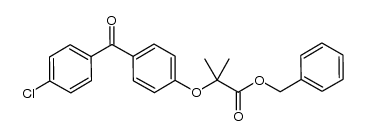
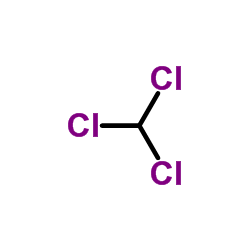
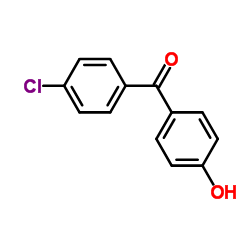


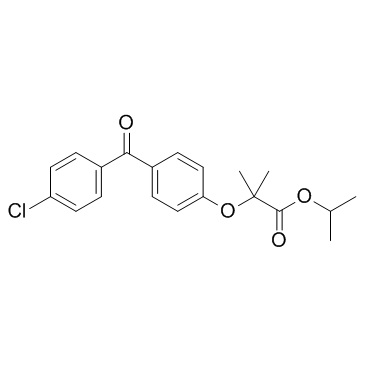
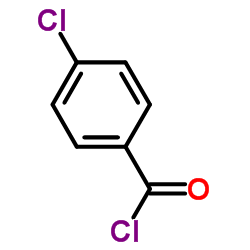


![propan-2-yl 2-[4-[(4-chlorophenyl)-hydroxymethyl]phenoxy]-2-methylpropanoate structure](https://image.chemsrc.com/caspic/398/61001-99-8.png)
![2-[4-(4-chlorobenzoyl)phenoxy]-2-methylpropanoyl chloride structure](https://image.chemsrc.com/caspic/055/65178-90-7.png)